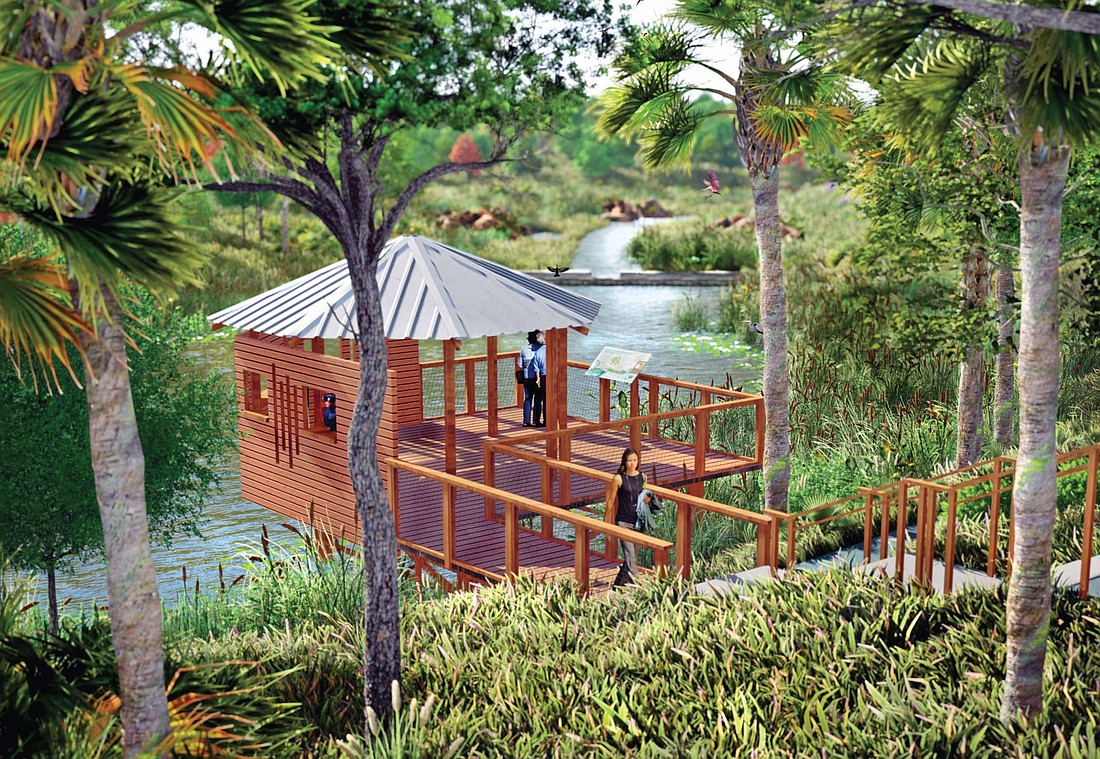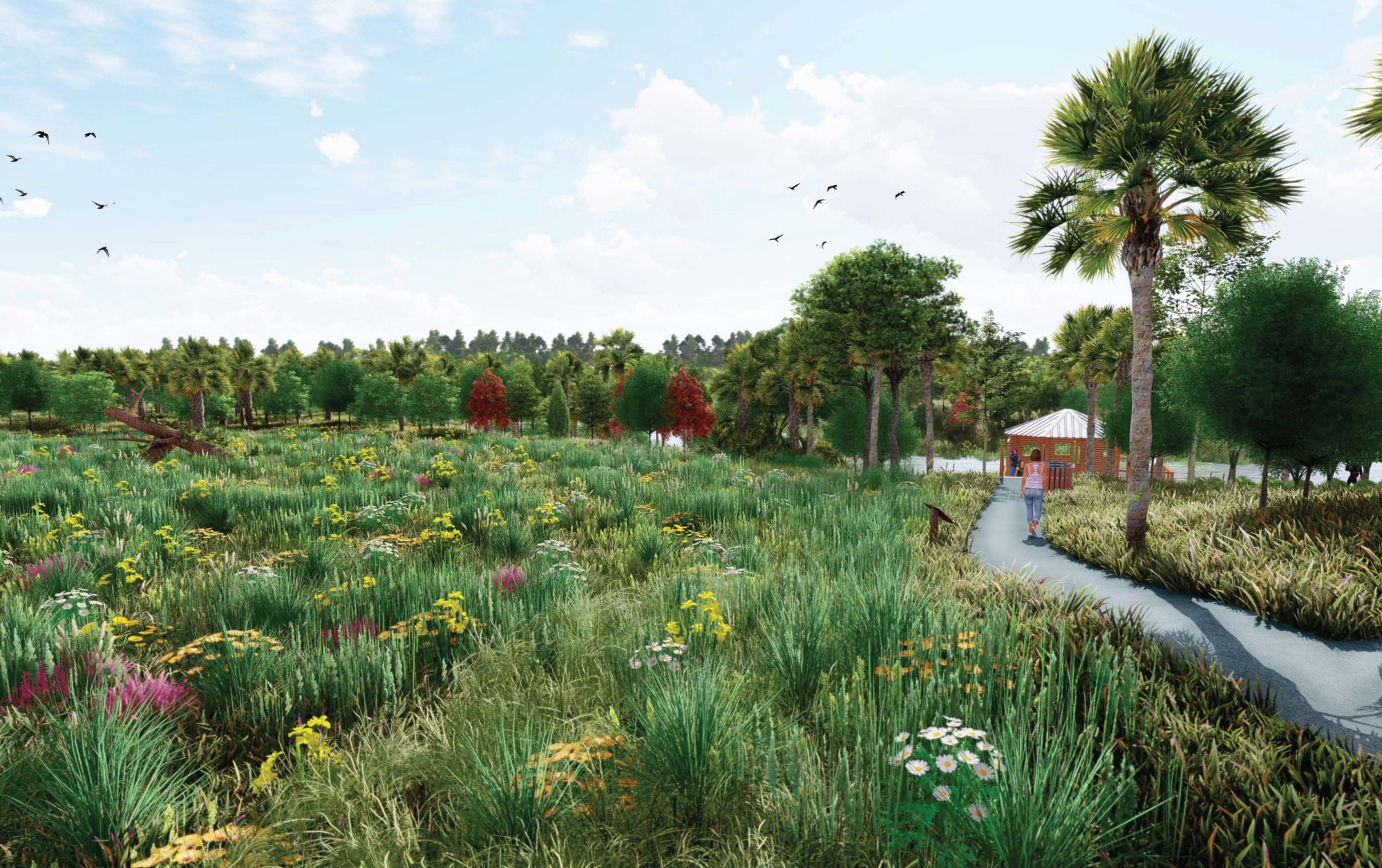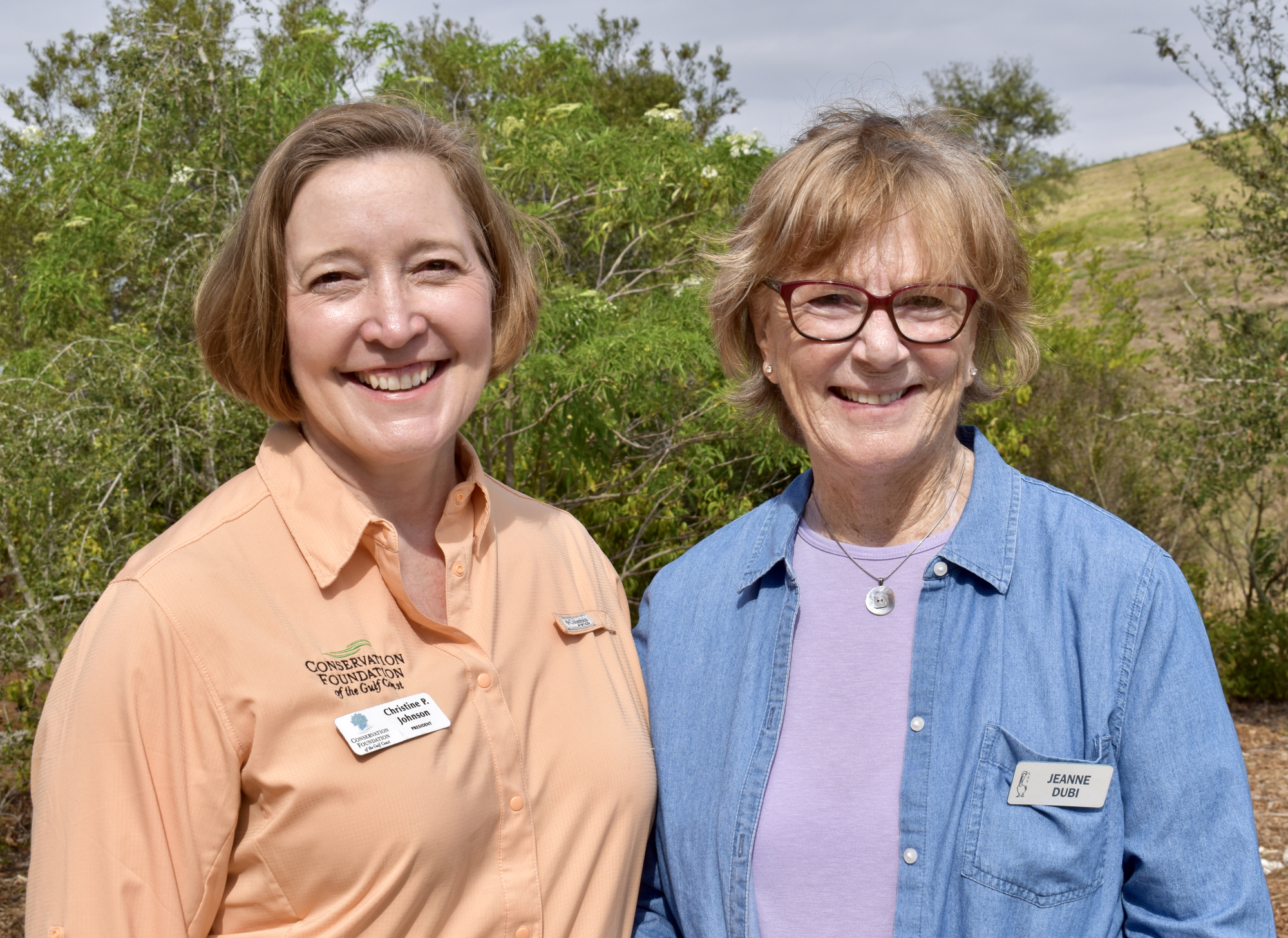- May 8, 2025
-
-
Loading

Loading

If all goes as envisioned on land just west of Celery Fields, snowbirds might one day be the only migratory creatures unable to tell where the already-established nature sanctuary ends and where a new project to “re-wild” a trio of adjacent county-owned parcels begins.
That’s the goal of the Conservation Foundation of the Gulf Coast, Sarasota Audubon and county leaders in reimagining the future of the so-called Quads, a collection of properties once considered surplus land at the four corners of Palmer Boulevard and Apex Road, within sight of Interstate 75.
Although no approvals or permits have been issued yet for construction (that could happen by September), and fundraising is just getting started, the two nonprofits last weekend held an open house at Celery Fields to showcase concepts for the 33 acres and kick off public awareness of what they hope to accomplish.
Foot traffic at the open house was brisk at the Audubon Society’s Nature Center as visitors stopped in to chat with representatives of both organizations and look over several large-format illustrations and a map of proposed new features.

Envisioned improvements include extensive plantings, meadows, woodlands, trails, high and low points of terrain along a stream, shaded picnic areas, ADA-compliant walkways, a bird blind/observation platform, facilities, a discovery area for kids, and more, a news release said.
The northwest Quad will remain as is: there’s a newly built county fire station there now and room for more. The other three are the focus of conservation.
In 2019, as months and months of public sentiment swelled against the proposed sale and private development of the three parcels, Christine Johnson of the Conservation Foundation and Jeanne Dubi of the Audubon Society approached the County Commission with the original idea to set aside two of the four parcels for conservation in perpetuity.
"The commission loved it so much, they threw in the third," Johnson said.
In 2020, commissioners unanimously voted to place a conservation easement over the southwest, southeast and northeast parcels, and it’s also when Audubon and the foundation agreed on a partnership.
A rezoning in 2021 cemented long-term intentions for the land and its uses. Staff also requested that any future buildings in the area be designed with elements of Florida Vernacular architecture, similar to the design of Fire Station No. 8 and the Audubon Nature Center.
"We conserve it, Audubon is going to manage it," Johnson said. "We’re fundraising together for this vision of re-wilding the Quads."
Johnson said the project would take 12-14 months to build if fundraising is successful enough to avoid phased-in construction. Willis Smith Construction, Kimley-Horn Planning and Design, and Progressive Water Resources are also part of the effort. Under optimum fundraising and permitting circumstances, work could begin in roughly a year. Once finished, the Quads park would seamlessly link with facilities at Celery Fields, though the habitats, and the wildlife they attract, will be entirely different.
Dubi said Celery Field is low and swampy, conditions that have led the 440 acres to gain international acclaim with bird watchers. The Quads land south of Palmer Boulevard lends itself to a higher-elevation woodland habitat that would lure an entirely different set of migratory visitors — both feathered and the kind who carry cameras and binoculars.
"One thing we do lack is forest and trees," Dubi said. "The whole idea was to create that habitat to increase biodiversity."
The retention pond on the northeast corner will stay largely as it is now, though "more beautiful and natural," Johnson said, adding the soil that was once scooped out to create the pond is the reason the surrounding topography is higher and drier than the Celery Fields land.

"It’s turned out the Celery Fields is nationally known and internationally known as a birding hot spot," Dubi said. "What we hope to accomplish is attracting other birds that don’t normally come to the Celery Fields and to create a migratory stopover."
She said birds all over the world are in decline because of factors like habitat loss but that it’s encouraging to see so many species flock to New York’s Central Park. "We can do the same thing."
Both Dubi and Johnson emphasized that it was grassroots opposition to a development proposal on the site in 2018 that launched the entire conservation effort, and it would be the same kind of community support that will fuel a successful fundraising campaign. Because the plans are not final, there is no fundraising goal, but Johnson said it would be "more than a few million dollars."
"We need the grassroots people," Dubi said. "The grassroots people started this all. They were the ones who said to the county, 'Don’t sell that land. Save that land.' And we were able to come up with a solution."
The Conservation Foundation is also working with the city of Sarasota on its initiative to remake the Bobby Jones Golf Course. Groundbreaking is set for March 4 to begin not only restoring the closed municipal golf layout to its original design by famed architect Donald Ross but also set aside about 108 acres as a nature park in perpetuity.
At the same time the city approved plans, it also approved a $20 million bond to finance golf course construction and the framework for the nature park’s wetlands. Johnson said she hopes to be finished fundraising for the Quads by the time her organization must gear up to raise money for the second phase of nature park construction, which would include more granular work and the nature park’s amenities.
Johnson said the efforts to conserve green space is a positive development for the entire community and one that couldn’t happen without the community.
"They didn’t know how to make it happen, they didn’t know how to design it, but that’s what we do," she said. "But we couldn’t do it without the community. And the community couldn’t do it without us. Now, to make this all a reality, we’re asking the community help."